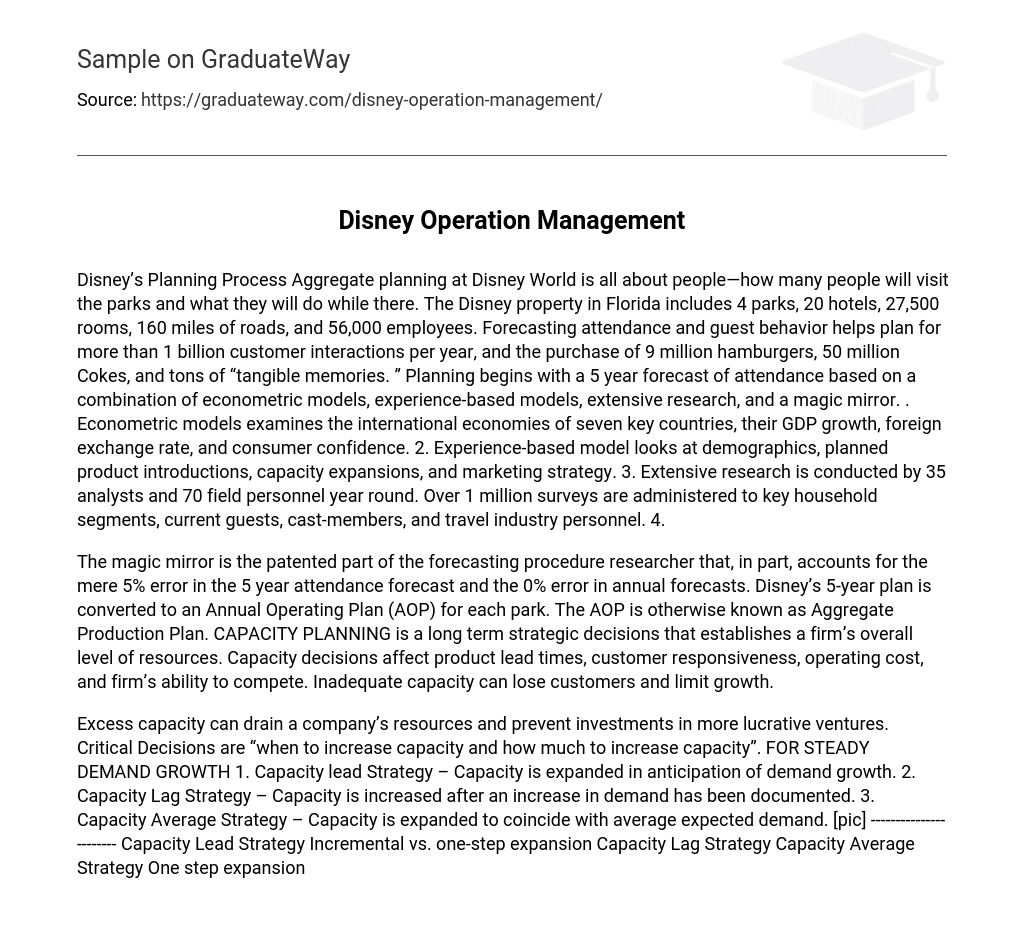Disney’s Planning Process Aggregate planning at Disney World is all about people—how many people will visit the parks and what they will do while there. The Disney property in Florida includes 4 parks, 20 hotels, 27,500 rooms, 160 miles of roads, and 56,000 employees. Forecasting attendance and guest behavior helps plan for more than 1 billion customer interactions per year, and the purchase of 9 million hamburgers, 50 million Cokes, and tons of “tangible memories. ” Planning begins with a 5 year forecast of attendance based on a combination of econometric models, experience-based models, extensive research, and a magic mirror. . Econometric models examines the international economies of seven key countries, their GDP growth, foreign exchange rate, and consumer confidence. 2. Experience-based model looks at demographics, planned product introductions, capacity expansions, and marketing strategy. 3. Extensive research is conducted by 35 analysts and 70 field personnel year round. Over 1 million surveys are administered to key household segments, current guests, cast-members, and travel industry personnel. 4.
The magic mirror is the patented part of the forecasting procedure researcher that, in part, accounts for the mere 5% error in the 5 year attendance forecast and the 0% error in annual forecasts. Disney’s 5-year plan is converted to an Annual Operating Plan (AOP) for each park. The AOP is otherwise known as Aggregate Production Plan. CAPACITY PLANNING is a long term strategic decisions that establishes a firm’s overall level of resources. Capacity decisions affect product lead times, customer responsiveness, operating cost, and firm’s ability to compete. Inadequate capacity can lose customers and limit growth.
Excess capacity can drain a company’s resources and prevent investments in more lucrative ventures. Critical Decisions are “when to increase capacity and how much to increase capacity”. FOR STEADY DEMAND GROWTH 1. Capacity lead Strategy – Capacity is expanded in anticipation of demand growth. 2. Capacity Lag Strategy – Capacity is increased after an increase in demand has been documented. 3. Capacity Average Strategy – Capacity is expanded to coincide with average expected demand. [pic] ———————– Capacity Lead Strategy Incremental vs. one-step expansion Capacity Lag Strategy Capacity Average Strategy One step expansion





